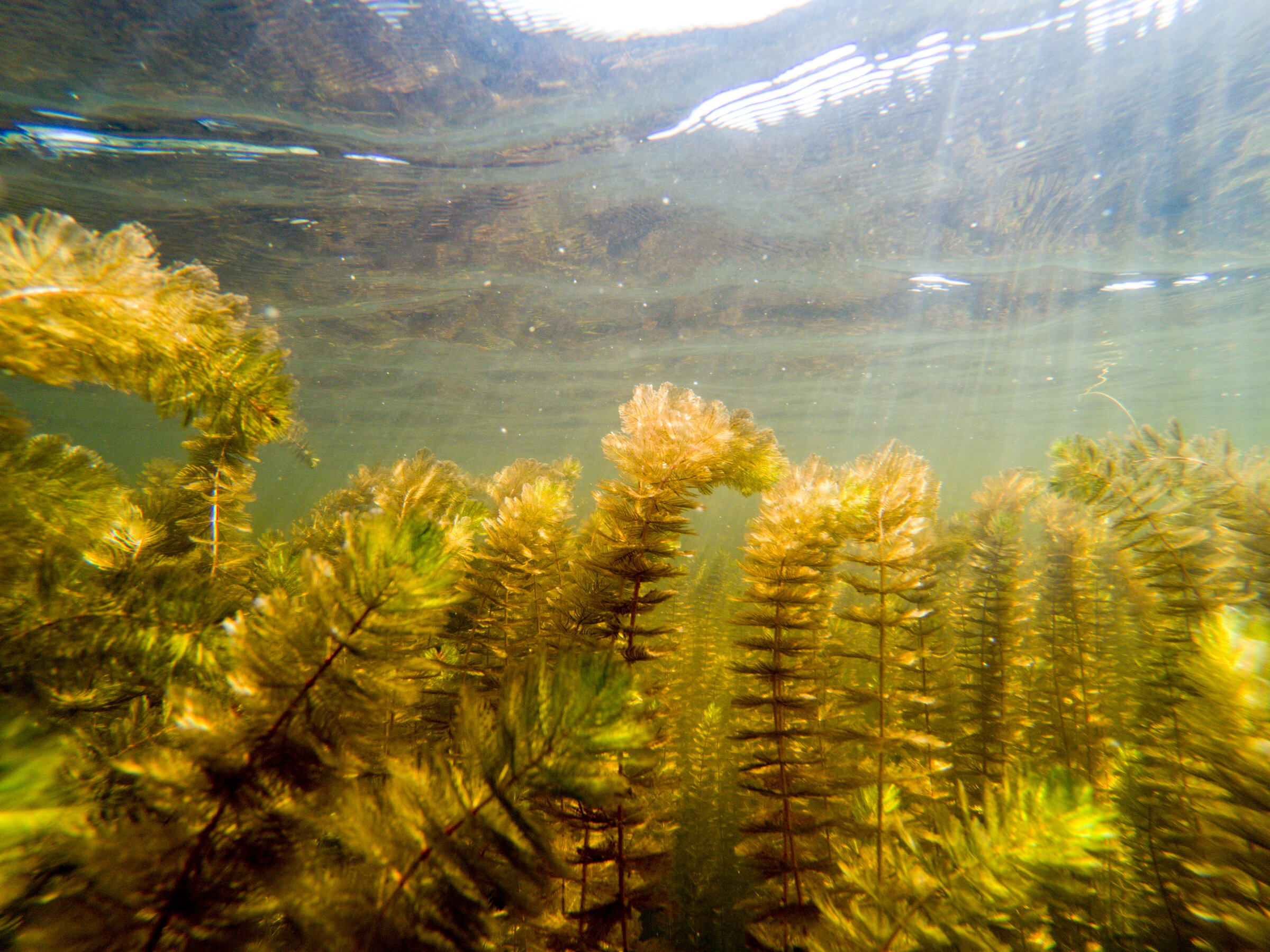
Invasive Species Research
AWI researchers have been investigating aquatic invasive plants since 2004 by conducting plant surveys, monitoring control efforts, and surveying boaters through our invasive species efforts. The result is an accumulated extensive dataset that can be used for regional investigations of aquatic invasive plants. We recently started using controlled laboratory experiments in collaboration with the Center for Adirondack Biodiversity (CAB) to study invasive plant biology and the response/tolerance of these plants to environmental factors. To date, we have published three papers on aquatic invasive species, covering the effectiveness of hand harvesting to control Eurasian watermilfoil (Myriophyllum spicatum) (Kelting and Laxson 2010), the tolerance of Eurasian watermilfoil fragments to drying (Evans et al. 2011), and implications for ecosystem change related to climate change and native-invasive competition (Patrick et al. 2012a). Current invasive species research projects include:
investigating the effects of water temperature on growth rates of native and invasive milfoil species in laboratory mesocosms in an effort to understand how climate change may affect aquatic plant communities
determining the probability of lakes harboring invasive aquatic plants based on landscape attributes and boater surveys to develop a risk model for optimizing limited management resources
developing environmental DNA methods (both field sampling technique and laboratory bench work) for surveillance of Asian clam and Zebra mussel
Milfoil Dessication
Eurasian watermilfoil often invades aquatic ecosystems in North America via fragment transport from infested lakes to uninfested water bodies by watercraft and boat trailers. While fragments transported on watercraft and trailers are likely introduced to new water bodies in various stages of desiccation, surprisingly little is known about the desiccation tolerance and subsequent viability of Eurasian watermilfoil. We conducted in situ and laboratory experiments during the 2010 growing season to examine Eurasian watermilfoil desiccation rate and viability with drying. We found that Eurasian watermilfoil dries rapidly and was completely dry within 13 hours under laboratory conditions. We also found that desiccation significantly reduced the likelihood of fragment viability from 98% in control fragments to 2% in fragments that were completely (100%) desiccated in the laboratory experiment. Although desiccation significantly reduced Eurasian watermilfoil fragment viability, a small proportion (2%) of fragments that were 100% dried were still viable and able to form rootlets. From: Evans et al. 2012, Journal of Aquatic Plant Management, 49:1-5.

